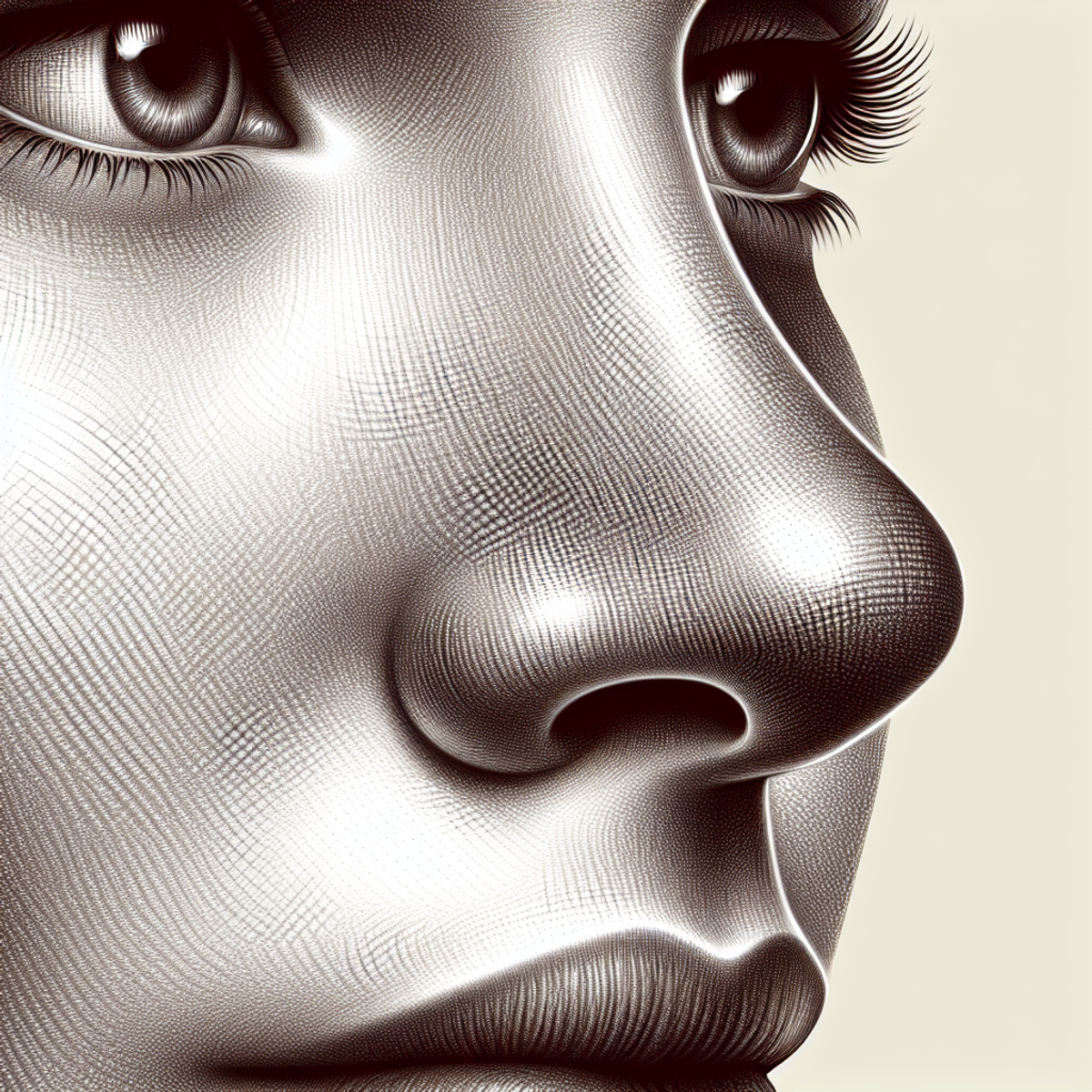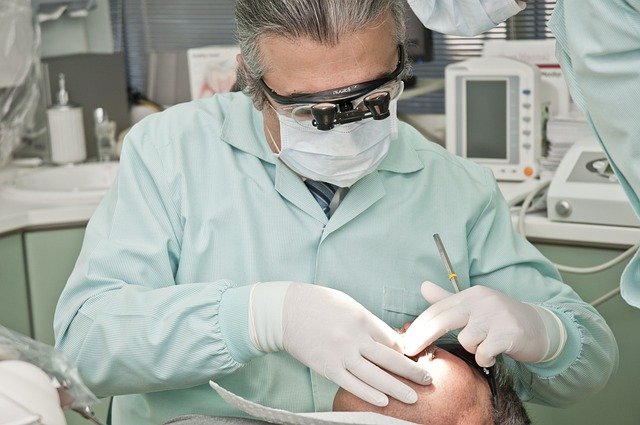Introduction
The nasal dorsum, also known as the bridge of the nose, plays a significant role in rhinoplasty surgery. It is the highest point of the nose, located at pupil level, and has a considerable influence on the aesthetics of both the nose and the entire face. Dorsum rhinoplasty, or dorsal rhinoplasty, is a surgical procedure that focuses on addressing aesthetic concerns related to the nasal dorsum.
In this article, we will explore:
- The anatomy of the nasal dorsum and its composition, including the nasal bones and upper lateral cartilages.
- Common aesthetic concerns that affect the appearance of the nasal dorsum, such as:
- A dorsal hump (an excessive convexity along the bridge of the nose)
- A wide bridge
- An under-projected dorsum
- Surgical techniques used to correct dorsal irregularities in rhinoplasty, including:
- The open versus closed rhinoplasty approach
- How osteotomy can be utilized to reshape the nasal bones for dorsal harmony
- Cartilage grafting for dorsal augmentation or reconstruction
- Non-surgical alternatives for dorsal enhancement, such as:
- Soft tissue fillers for temporary augmentation
- Silicone nasal implants as an alternative approach to dorsum rhinoplasty
- Patient selection and considerations in dorsal rhinoplasty, including:
- Utilizing the patient’s own cartilage as a preferred option for dorsal refinement
- Exploring different sources for grafting purposes
- Outcomes assessment and risk management in dorsum rhinoplasty procedures, including:
- Thorough evaluation techniques for post-operative outcomes
- Strategies to mitigate potential risks
Achieving optimal results in dorsum rhinoplasty procedures requires a comprehensive understanding of nasal anatomy and careful consideration of various surgical techniques. It is crucial for individuals with concerns regarding their nasal dorsum to consult with a qualified rhinoplasty surgeon to determine the most suitable approach for their specific needs.
Understanding the Nasal Dorsum
The nasal dorsum is an important part of the nose and face’s overall appearance. It refers to the bridge of the nose, specifically the highest point at eye level. The nasal dorsum is made up of two main parts: the nasal bones and the upper lateral cartilages (ULC).
- Nasal Bones: The top half of the nasal dorsum consists of the nasal bones. These paired bones provide support and shape to the bridge. They are positioned next to each other, running from the top of the nose to just above the tip.
- Upper Lateral Cartilages (ULC): The bottom half of the nasal dorsum is made up of cartilages called the upper lateral cartilages. These cartilages connect to the nasal bones and play a role in determining the width and shape of the bridge.
The relationship between the nasal dorsum and overall facial appearance is important. Having balanced facial features is key to looking good. The nasal dorsum acts as a central point, affecting not only how the nose looks but also other parts of the face.
When assessing facial appearance, it’s crucial to think about how different aspects of the nose, including the nasal dorsum, work together with other features like the chin, forehead, and cheekbones. Creating balance and harmony among these features can significantly improve overall facial attractiveness.
Understanding the structure and makeup of the nasal dorsum is essential for addressing cosmetic issues during rhinoplasty procedures. Surgeons need to study each patient’s individual facial traits to decide on appropriate methods for correcting dorsal problems.
By carefully analyzing factors such as nasal bone structure, ULC position, and overall facial anatomy, surgeons can develop a personalized treatment plan that tackles specific issues related to the nasal dorsum while delivering optimal results that enhance the patient’s facial features.
Common Aesthetic Concerns: Dorsal Hump, Wide Nose, and Under-Projected Dorsum
The appearance of the nasal dorsum can be affected by various aesthetic concerns, including a dorsal hump, wide nose, and an under-projected dorsum. These issues can have a significant impact on facial harmony and overall nose aesthetics.
Dorsal Hump
A dorsal hump refers to an excess prominence or convexity of the nasal bridge. It is often caused by an excessive growth of bone or cartilage in this area. This results in a visible bump or hump along the nasal bridge, which can create an unbalanced or disproportionate appearance. Patients with a dorsal hump often seek rhinoplasty to achieve a straighter and more refined nasal profile.
Wide Nose
A wide nose is characterized by a broad or wide nasal bridge. It can be due to wide nasal bones or thick upper lateral cartilages. This condition can make the nose appear disproportionate to the rest of the face, affecting facial harmony. Patients with a wide nose may desire rhinoplasty to narrow the nasal bridge and create a more balanced facial profile.
Under-Projected Dorsum
An under-projected dorsum refers to a lack of forward projection or height in the nasal bridge. It can give the appearance of a flat or weak bridge, which may affect the overall balance and aesthetics of the nose. Patients with an under-projected dorsum often seek rhinoplasty to enhance their nasal profile and achieve better facial harmony.
Addressing these common aesthetic concerns related to the nasal dorsum is essential for achieving optimal results in rhinoplasty procedures. By understanding the specific issues affecting the nose’s appearance, surgeons can tailor their approach to each patient’s unique needs and goals.
Remember, every individual has different facial proportions and preferences, so it’s crucial to consult with a qualified rhinoplasty surgeon to determine the most suitable approach for addressing dorsal hump, wide nose, or an under-projected dorsum.
Surgical Techniques for Dorsal Correction in Rhinoplasty
In rhinoplasty, there are various surgical techniques available to address different types of dorsal irregularities and achieve optimal results. These techniques are tailored to the specific needs and goals of each patient. Let’s explore some of the common surgical approaches used for dorsal correction:
1. Open vs. Closed Rhinoplasty: Choosing the Right Technique Based on Needs and Goals
- Open rhinoplasty involves making an incision on the columella, the strip of tissue between the nostrils, to access the nasal structures. This technique provides better visibility and control during surgery, making it suitable for complex dorsal corrections.
- Closed rhinoplasty involves incisions made inside the nostrils, with no external scarring. This technique is more conservative and is usually recommended for patients who require minimal dorsal modification.
2. Osteotomy: Reshaping the Nasal Bones for Dorsal Harmony
Osteotomy is a surgical procedure that involves cutting and repositioning the nasal bones to achieve the desired dorsal contour. Different techniques can be employed depending on the specific needs of each patient, such as:
- Infracture osteotomy: The nasal bones are fractured and inwardly repositioned to narrow a wide dorsum.
- Outfracture osteotomy: The nasal bones are fractured and outwardly repositioned to increase dorsum width or correct asymmetry.
- Perforating osteotomy: Additional cuts are made in the nasal bones to enhance their mobility and facilitate reshaping.
3. Cartilage Grafting for Dorsal Augmentation or Reconstruction
Cartilage grafting is a common technique used to augment or reconstruct the dorsal region of the nose.
- Autologous cartilage grafts, harvested from the patient’s own septum, ear, or rib, are commonly used due to their compatibility and low risk of complications.
- Grafts can be placed on top of the nasal bones to increase dorsal projection or used to camouflage irregularities and create a smoother dorsum.
- In some cases, reduction rhinoplasty may be necessary to address an overly projected dorsum. This involves removing excess bone and cartilage to achieve a more balanced and harmonious nasal profile.
By employing these surgical techniques, skilled rhinoplasty surgeons can effectively address dorsal irregularities and achieve a natural-looking nasal contour. It’s important for patients to consult with a qualified surgeon to determine the most suitable approach for their specific concerns.
Non-Surgical Alternatives for Dorsal Enhancement
Non-surgical methods offer alternatives for individuals seeking dorsal enhancement without undergoing traditional rhinoplasty surgery. These options are particularly suitable for those looking for temporary solutions or who prefer to avoid the invasiveness of surgical procedures. Here are the key points to consider:
1. Soft Tissue Fillers
Soft tissue fillers can be used to achieve temporary dorsal augmentation by injecting substances such as hyaluronic acid or calcium hydroxylapatite. While this non-surgical approach can provide immediate results, it’s important to note that the effects are not permanent, and the procedure needs to be repeated periodically to maintain the desired outcome.
Additionally, there are potential limitations and risks associated with fillers, including:
- The possibility of asymmetry
- Migration of the filler material
- Rare but serious complications such as vascular compromise
2. Silicone Nasal Implants
Another non-surgical alternative involves the use of pre-made silicone implants specifically designed for nasal augmentation. These implants can be inserted to address dorsal irregularities and enhance the overall appearance of the bridge of the nose.
However, it’s essential to consider potential complications associated with silicone implants, such as:
- Displacement
- Infection
- Extrusion
Patients should be well-informed about the risks and benefits before opting for this approach.
These non-surgical options provide individuals with choices for addressing aesthetic concerns related to the nasal dorsum without undergoing invasive surgery. However, it’s crucial for individuals to consult with qualified medical professionals to determine the most suitable approach based on their specific needs and expectations.
Considerations in Dorsal Rhinoplasty: From Materials to Patient Selection
When it comes to dorsal rhinoplasty, there are several important considerations to keep in mind, from the choice of materials used to the selection of the right patients for the procedure. Let’s delve into these considerations further:
1. Utilizing the patient’s own cartilage
Autologous cartilage grafts, which involve using the patient’s own cartilage, are often considered a preferred option for dorsal refinement. This approach offers several benefits, including a reduced risk of rejection or infection compared to synthetic materials. Additionally, using the patient’s own cartilage allows for a more natural and harmonious result.
2. Different sources for grafting purposes
The patient’s own cartilage can be harvested from various locations within the body, such as the septum, ear, or rib. Each source has its own advantages and limitations. For example:
- Septal cartilage is an ideal choice when available as it provides ample graft material and is conveniently located within the nose.
- However, if septal cartilage is insufficient or unavailable, other sources like ear or rib cartilage may be considered.
3. Benefits and limitations of various dorsal correction techniques
There are different techniques available for dorsal correction in rhinoplasty, each with its own set of benefits and limitations. For instance:
- Osteotomy: This technique involves reshaping or narrowing the nasal bones to achieve dorsal harmony. It can effectively address issues such as a wide bridge or asymmetry.
- Cartilage grafting: Cartilage grafts can be used for dorsal augmentation or reconstruction. They provide structural support and can help achieve the desired nasal contour. However, it is important to note that cartilage grafting may have limitations in terms of availability and potential absorption over time.
It is crucial for both surgeons and patients to carefully consider these factors in order to achieve optimal outcomes in dorsal rhinoplasty procedures. By utilizing the patient’s own cartilage and understanding the benefits and limitations of different techniques, surgeons can tailor the approach to each individual’s needs and goals.
Remember, consultation with a qualified rhinoplasty surgeon is essential to determine the most suitable approach for your nasal dorsum concerns.
Outcomes Assessment and Risk Management in Dorsum Rhinoplasty
Thorough evaluation techniques and effective risk management are crucial in achieving successful outcomes in dorsum rhinoplasty procedures. By carefully assessing post-operative results and implementing strategies to mitigate potential risks, surgeons can optimize patient satisfaction and minimize complications. Additionally, incorporating evidence-based practice, including a comprehensive literature review, can further enhance surgical outcomes.
1. Importance of thorough evaluation techniques
After the surgery, it is essential to assess the outcomes of the dorsum rhinoplasty procedure. This includes evaluating the nasal shape, symmetry, and overall aesthetic appearance. Thorough evaluation techniques may involve close examination of surgical photographs, three-dimensional imaging, and patient feedback. By carefully assessing the results, surgeons can identify any areas that need further refinement or adjustment.
2. Strategies to mitigate potential risks
Dorsum rhinoplasty carries certain risks, such as infection, bleeding, scarring, or asymmetry. To minimize these risks, surgeons should follow strict sterile techniques during the procedure and provide patients with detailed post-operative care instructions. Additionally, close monitoring of patients during the recovery period allows for early detection of any complications and prompt intervention if needed.
3. Evidenced-Based Practice: The Role of Literature Review
Incorporating evidence-based practice is essential in enhancing surgical outcomes. Surgeons should stay up-to-date with the latest research and scientific literature regarding dorsum rhinoplasty techniques, materials, and best practices. By reviewing published studies and case reports, surgeons can gain valuable insights into various approaches and learn from the experiences of their peers.
By focusing on outcomes assessment and risk management in dorsum rhinoplasty procedures, surgeons can ensure optimal results for their patients:
- Thorough evaluation techniques aid in identifying areas for improvement
- Strategies to mitigate potential risks reduce complications
- Embracing evidence-based practice through literature review enhances surgical outcomes by incorporating the latest knowledge and advancements in the field.
Conclusion
Understanding the nasal dorsum and its significance in rhinoplasty surgery is crucial for achieving optimal results. The nasal dorsum, which consists of the nasal bones and upper lateral cartilages, plays a key role in overall facial aesthetics.
Addressing common aesthetic concerns such as a dorsal hump, wide nose, or under-projected dorsum can greatly enhance facial harmony. Surgical techniques like open or closed rhinoplasty, osteotomy, and cartilage grafting offer effective solutions for dorsal correction.
While non-surgical alternatives like soft tissue fillers and silicone nasal implants can provide temporary enhancement, they have limitations and potential complications. Therefore, it is important to consult with a qualified rhinoplasty surgeon to determine the most suitable approach for your specific nasal dorsum concerns.
By considering materials, patient selection, outcomes assessment, and risk management strategies, patients can achieve their desired results with confidence.
Remember, achieving a balanced and harmonious nasal dorsum is essential for enhancing overall facial aesthetics.



